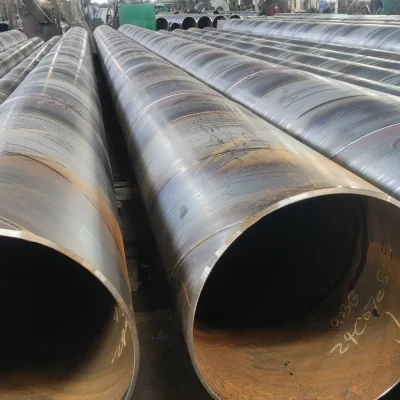Introduction: The Evolution and Importance of Spiral Welded Pipes in Global Infrastructure
The spiral welded pipe industry stands as a cornerstone of modern infrastructure development, providing the essential arteries through which the lifeblood of global economies—oil, gas, and water—flows. These critical components have undergone remarkable evolution since their inception, transforming from rudimentary conduits to sophisticated engineered products designed to withstand extreme conditions while maintaining structural integrity for decades.
As we look toward the horizon of infrastructure development, spiral welded pipes continue to play an increasingly vital role in addressing global challenges. From supplying clean water to developing regions to facilitating energy transmission across continents, these steel arteries form the backbone of critical systems worldwide. For wholesale buyers, distributors, and industry professionals, understanding the trajectory of this industry isn’t merely academic—it’s a strategic imperative.
The spiral welded pipe market has demonstrated remarkable resilience, even amidst global disruptions. According to recent market analyses, the global spiral welded pipe market is projected to grow at a CAGR of approximately 4.8% between 2023 and 2028, reaching a market value of over $40 billion by the end of the forecast period. This growth reflects not only increased infrastructure spending but also the expanding applications of these versatile products.
What sets spiral welded pipes apart from their longitudinal counterparts is their unique manufacturing process. By helically winding steel strips and joining them through sophisticated welding techniques, manufacturers can produce pipes with superior pressure resistance, structural integrity, and cost efficiency. This manufacturing method creates a distinct advantage for applications requiring large-diameter pipes, typically ranging from 24 inches to over 100 inches in diameter.
Current Market Landscape: Global Demand and Supply Chain Dynamics for Wholesale Spiral Steel Pipes
The global spiral welded pipe market presents a complex landscape characterized by regional demand variations, evolving supply chain challenges, and intensifying competitive dynamics. For wholesale buyers, distributors, and industry professionals navigating this terrain, understanding the current market forces is essential for strategic procurement and business planning.
Supply Chain Dynamics and Challenges
The spiral welded pipe supply chain has undergone significant transformation in recent years, shaped by several interrelated factors:
Raw Material Volatility: Steel price fluctuations have created procurement challenges for manufacturers and pricing uncertainty for buyers. Hot-rolled coil (HRC) prices, the primary input for spiral welded pipes, have experienced unprecedented volatility, with variations exceeding 200% in some regions during 2021-2022. This volatility has necessitated more sophisticated pricing mechanisms and contract structures between suppliers and wholesale buyers.
Technological Innovations Reshaping Spiral Welded Pipe Manufacturing
The spiral welded pipe industry is experiencing a technological renaissance, with advancements across the manufacturing process yielding significant improvements in product performance, production efficiency, and quality assurance. For wholesale buyers and industry professionals, these innovations translate to enhanced product capabilities, more consistent quality, and ultimately superior infrastructure performance.
Advanced Welding Technologies
The welding process represents the critical success factor in spiral pipe manufacturing, directly impacting structural integrity and performance reliability. Recent technological innovations have dramatically improved welding precision and consistency:







